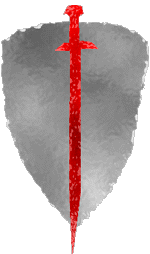 Thallarithia, Goddess of Trickery, Disciple of Oathbinder,
CN
Thallarithia, Goddess of Trickery, Disciple of Oathbinder,
CN Domains: Destruction, Trickery, War; Favored Weapon: Shortsword
Lesser Deities
Thallarithia - Reaver - Cruithne - Elation and Joy - Thallacious - Quanesta - Erthonnen - Dominia - Sildaneveya - Drandth - Elleron - Urthana
 Thallarithia, Goddess of Trickery, Disciple of Oathbinder,
CN
Thallarithia, Goddess of Trickery, Disciple of Oathbinder,
CN
Domains: Destruction, Trickery, War; Favored Weapon: Shortsword
History and Personality: Thallarithia is the right hand of Oathbinder, and his foremost tactician. Whereas Oathbinder demands honorable battle, Thallarithia knows that sometimes, the warrior who knows a few underhanded tricks is the warrior most likely to fight again some other day. Thallarithia's origins are obscure, though some records indicate that she was originally a Gnomic goddess who later widened her purview. Since the Gnomes mostly live under the rule of the Orcs, there is precious little opportunity to consult them on the issue. Regardless, Thallarithia is a moody yet personable god, and is among the most active in Aladagia. She is periodically seen in Kentish lands as well as the southern Council lands, generally in times of war, but also occasionally during times of civil strife. When she appears, she takes a multitude of forms, but the astute observer will always be able to identify Thallarithia by her ebony short sword and tarnished shield reminiscent of Oathbinder's. It is said that seeing Thallarithia before a battle is a warning of underhanded tactics planned by the enemy, or else a warning that unorthodox measures will be needed for victory.
Celebrations: There are no official holidays in honor of Thallarithia. Rather, she desires that warriors who survive and triumph by her grace (by trickery, unorthodoxy, outright cheating, and so on) pay homage to her during their victory celebrations. Typically, she asks that the bodies of the slain by offered to her by burning them, though she does not approve of the sacrifice of prisoners.
Priesthood: Thallarithia's priests are typically as martial as she is, and fill posts as generals, tacticians, engineers, and occasionally spymasters in addition to their religious duties. Since they have no major holidays or other observances to oversee, Thallarithia requires them to make some small sacrifice, typically a few coins, to some worthy cause in her name whenever they achieve an important personal victory through her grace (see above).
Colors and Symbols: Thallarithia favors the colors crimson and dark gray, and her symbols include short swords, tarnished silver shields, caltrops, and smoke. **
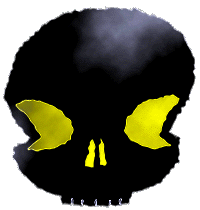 Reaver, Deity of Death and Destruction, Disciple of
Skydancer, TN
Reaver, Deity of Death and Destruction, Disciple of
Skydancer, TN
Domains: Death, Destruction, Sun
History and Personality: Death, end of suffering and beginning
of dismay. The philosophical place Reaver as the second god:
Skydancer created life and her disciple eased it on to the next world.
Yet, despite this age, relatively little is known about this god, for
the nature of the being is kept even more secret than the gods of the moons.
Besides being held accountable for the formation of clan Deathknell
and carrying the souls of the dead to their afterlife or new incarnations,
there is nearly nothing known about the duties of Reaver.
Yet despite this fact, Reaver is known to be the most active of the gods
on the mortal plane. An incarnation of Reaver is seen at the site of
major battles and many other important deaths, at least according to those
of spiritual awarness. This makes it seem likely that a great deal
of the God's offices are taken up in mortal manefestation.
Celebrations: The one festival to Reaver, Darkhallow, comes at the death of the year, following the harvest festivals. The last night of Urthant is an eve of sombre meditation, where mortals think about loved ones lost and those yet to be loved.
Priesthood: The devout of Reaver are few, mostly comprised of members of clan Deathknell. These serve mostly the needs of the community for a generalist cleric, only having specific duties in funerary rites.
Colors and Symbols: The symbol of Reaver is a skull of his colors of black and gold.
 Cruithne,
God of Fate and Destiny, LN
Cruithne,
God of Fate and Destiny, LN
Domains: Luck, Magic, Travel
History and Personality: Cruithne is an enigmatic and taciturn god, and reportedly a rather grumpy old man. He is one of the oldest deities worshipped in Aladagia, and some people claim that his attitude problem stems from his exclusion from the Seven, in favor of Skydancer's whelp Woundhealer. Be that as it may, Cruithne is still one of the most feared and respected of the gods, since he is said to control (or at least influence) the paths that mortals may take through life. Those who are in the favor of the god of fate can expect a better road (but not necessarily an easier one) than those who earn the god's ire. Cruithne is arguably one of the darkest gods worshipped in Aladagia, not because he is evil, but because of his dour and dispassionate nature. He follows the letter of the law, and does not let emotions, whether hate or pity, sway his decisions. This causes many people to resent his influence, especially when bad things happen to good people.
Celebrations: Cruithne does not have any specific holy days, though his priests deign to hold a small service in his honor on religious days during his month. Primarily, these services exist to make sure people do not forget that Cruithne moves the world in mysterious ways, since he tends to keep a relatively low profile compared to some of the other gods.
Priesthood: Priests of Cruithne tend to follow their god in the personality department, and like to act mysterious and aloof. Despite their allegiance to the god of fate, priests of Cruithne do not have special access to divination spells, which they claim is a sign that people should not inquire too deeply about the future. Since Cruithne does not have any specific holy days, his priests have few official responsibilities. Despite this fact, their order will hold frequent secret meetings, which reportedly involve powerful seekings and divinations, but in fact involve a nice dinner and lots of alcohol.
Colors and Symbols: Bones, star charts, and tea leaves are symbols associated with Cruithne, and his colors are dark lavender, dark blue, and silvery-white. **
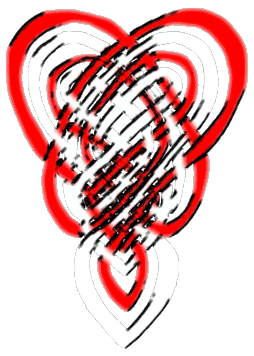 Elation and
Joy, Deities
of Love, NG
Elation and
Joy, Deities
of Love, NG
Domains: Air, Emotion, Healing
History and Personality:
She walked in beauty overwhelming, Her life a cause for the wars of the
land
To have her not a quest but an obsession, Yet her death would take hope and
leave damned
He looked down from the sky and loved her, He looked up from her reflection
in the pool
Loved her not as did the others, But loved her most deeply for her soul
They came from all lands to meet her, And lust turned to deepest jealousy
They began to fight to own her, A war that would stretch to infinity
And though such a thing was forbidden, Never before had a god's hand ended
a life
Though he would pay most dearly, He did what was needed to end the strife
He appeared in the midst of the factions, The god who brought happiness to
the fold
He grasped their Joy from between them, And this is what they were told
Nevermore would he permit such a seeming, Beauty would not stand to start
a war
Never would such a thing happen, It was on a god's conscience that it bore
He wrapped his chosen in his arms, Held in the arms of Elation
They both surrendered to their crimes, And formed a new creation
By their act was made one together, Enwrapped in one another and never
apart
To walk the clouds of the world or the valleys, A new era was now to start
Celebrations: Any marriage is considered a celebration to Elation and Joy, no matter which diety's priest oversees the bonding. In fact, any act of love, physical or spiritual, can be given as an offering to the Joined Ones, and it is said that their attention to the rite deeply heightens the experience and makes it far more likely that the couple will remain together and be happy.
Priesthood: The priesthood of Elation and Joy is among the smallest of the gods of light, but perhaps the most devout. There are no single priests or priestesses of the Joined Ones. The god and goddess accept only the worship of those bound by love, one partner worshipping Elation and the other Joy. Yet this restriction is necessary for understanding and preaching the message of the god, and the rare single priests or priestesses are those that have lost their mate and have managed to maintain their love and happiness in the memory of the departed. There have been rare examples of those who, for whatever reason, became joined preists without love. All of these ultimately found a deep and abiding love for their partner, erasing even profound hatred.
Colors and Symbols: The color of Elation is the red of love, and Joy's is the white of purity. The sugar-mint treats provided to children in the wintertime are inspired by this. Symbols vary, but most followers prefer an intricately woven knot in the shape of a heart to represent their gods.
Famous Followers: Legends speak of the first meeting between Elves and Humans being between two youths in a forest clearing. They fell deeply in love and when their peoples met as a whole, and battle threatened to break out, the two ran from the lines and embraced, calling down Elation and Joy to bless the meeting as one of friendship, not of anger. The two became the first priests of the Joined Ones ordained on the soil of Aladagia, and it is said both were given equal lifespans and still exist to this day.
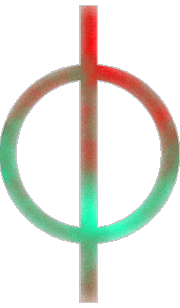 Thallacious, God of Fertility, Disciple of Woundhealer, CG
Thallacious, God of Fertility, Disciple of Woundhealer, CG
Domains: Animal, Plant, Prosperity
Thallacious is a god of contrasting natures. One side is nurturing and caring, the other is wasteful and extravagant. Ostensibly a male deity, Thallacious has been known to assume the form of whatever sex is most convenient at the time. Thallacious has even been reported as having taken the forms of animals from time to time. His favored form, however, is of a simple farmer or herdsman, with weathered but kind features and dressed in simple but well-maintained clothes. He is often seen with a walking stick of rough wood, and is frequently accompanied by a small number of attractive, earthy women. It is said that seeing this aspect of Thallacious is an omen for a season of plentiful growth and good harvests.
As the god of fertility, Thallacious also has a wild and uninhibited side to him. His chaotic aspect is prone to throwing wild orgies of sex and food; his disciples claim that such purgative behavior is actually beneficial, in the same way as burning a field's detritus helps the new crops grow. Many priests who claim to follow Thallacious only follow one aspect, depending on their personal opinions. Some rare few are able to successfully integrate both halves of the god's personality. Thallacious' appearance in this aspect is somewhat more variable, but he will usually appear as an extraordinarily beautiful person, usually accompanied by extremely beautiful men and women. Thallacious and his disciples seem to possess a feral, animal attractiveness, and encountering them is said to be an omen for personal fertility in the time to come.
Thallacious has two major celebrations in his honor during middle spring. The first is the Festival of Seeds on the first Newbirth of Thallacant. The Festival of Seeds is a celebration of growing things and the bounty Thallacious bestows upon people. Originally, the Festival of Seeds was celebrated by Thallacious' priests leading an pre-dawn procession to the nearest farmer's fields, where all participating members would spend the day doing the labor farmers did year round. It was supposed to make those who depended on the food grown by the farmers more thankful and appreciative. In more urban areas, especially those with limited food-growing areas, the Festival of Seeds has been replaced by the Festival of the Young, which is essentially a market day for selling or showing off the newborn animals, such as horses, mules, cows, and sheep. The second major celebration in honor of Thallacious occurs on the last night of Thallacant, and generally on into the following morning. The holiday's official title is the Feast of Spring, but its somewhat controversial celebrations have earned it the mocking titles of the Great Orgy and the Rutting of People. The part of the holiday celebrated by all calls for a huge feast to be put on by the entire town, or several large feasts if the population warrants it. Everyone is expected to contribute to the menu, and people generally just set up a large number of tables for people to put the food on, and eat buffet-style. After the feasting comes several hours of drinking, storytelling, dancing, singing, and whatever else the locals do for entertainment. After the oldest and youngest attendees leave for rest, the "available" youths and unmarried men and women pair off (or sometimes more than pairs) and copulate in the nearby fields. This is a symbolic way of affirming that Thallacious has bestowed fertility upon their town. Unsurprisingly, the following month generally sees a larger than normal number of weddings take place. **
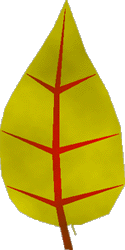 Quanesta, Goddess of Agriculture, Disciple of Earthmother,
TN
Quanesta, Goddess of Agriculture, Disciple of Earthmother,
TN
Domains: Earth, Growth, Plant
History and Personality: Quanesta was originally worshipped by the elves of Aladagia, but her worship spread to the humans almost as soon as they arrived. Given that humans are more aggressive in their attempts to cultivate land than the other races, owing mostly to their short lives and quick reproductive cycles, it is thought that Quanesta favors them above the other civilized races, though only slightly. Quanesta is a relatively benign deity, and rarely bothers to manifest directly in the world, or at least not in ways that make sense to mortals. In fact, she appears so very infrequently that days of debate amongst religious scholars follow any reliable sighting, attempting to determine what kind of omen it might be. Based on the very limited number of sightings, Quanesta is apparently a short, stocky woman with brownish-blond hair and brown eyes, with weathered skin and simple homespun clothing. She is not known to interact very much with mortals, so her personality seems to be aloof and distant, though her priests point out that every time one has enough food to eat, it is proof of Quanesta's caring and grace.
Celebrations: Quanesta has only one major celebration each year, and the date is not fixed. Following the last day of the harvest in autumn, the local people get together and have a large feast, where they give thanks to Quanesta for providing a bountiful harvest, or else supplicate her if the harvest was not good. In the event that this day of giving thanks falls on some other holiday, the celebrations are usually pushed back a day or two, depending on extenuating circumstances.
Priesthood: Quanesta prefers her priests to know their roots, so to speak, so most of them work close to the land, either as farmers or herders or as food merchants or something similar. All agricultural communities have a small altar to Quanesta, and make weekly prayers to her to send gentle rains and warm sunshine and good crops. In the event that situations are unfavorable for growing, daily prayers are not uncommon. Quanesta's priests typically lead such prayers, and have a formal role at the harvest celebration, where they bless the food and give thanks or offer prayers as needed.
Colors and Symbols: Quanesta's colors are red, gold, and brown, and her symbols include leaves, corn, the scythe, oxen, and mules. **
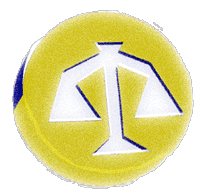 Erthonnen, God of Trade, LN
Erthonnen, God of Trade, LN
Domains: Gate, Prosperity, Travel
History and Personality: Erthonnen is actually the heir to an older god, and is generally considered to be the son of that god, whose name is now lost to time. The older god represented a more simplistic conception of law and trade, and as people came to rely more and more on money and arbitrary standards of value for goods, the older god became obsolete, and Erthonnen rose in his place. Erthonnen is, therefore, among the youngest of the gods worshipped in the Council lands. Nevertheless, Erthonnen has one of the largest followings of any of the minor deities, though his worshippers typically reside in large cities, or along trade routes and in near trading posts. Erthonnen is an especially canny god; indeed, he is said to be entirely immune to deception of any sort, so he often acts as an arbiter for both gods and men (for a fee, of course). When he manifests as a mortal, he is typically bedecked in expensive clothing befitting a wealthy merchant, though his physical features are known to be inconstant.
Celebrations: Erthonnen has at least four major celebrations each year, generally taking up part of several days for each festival. Each holiday is a seasonal festival, occurring on or about the 15th-17th of each mid-season month. The festivals are called the Midwinter's Fair, Midspring's Fair, Midsummer's Fair, and Midautumn's Fair. The Festivals largely amount to trade conventions, where local craftsmen and artisans bring their wares to the nearest trading center. Of course, anyone who has anything to sell is welcome to set up a booth, and sometimes one finds magical items and rare animals for sale. The Fairs have even greater significance when it also happens to be the Year of Craftsman, ruled over by Soulforger, and the celebrations sometimes run over their normal duration.
Priesthood: Clerical duties for priests of Erthonnen include presiding over and resolving disputes with an eye to both compassion and justice. Clerics who worship Erthonnen often fill positions as judges, magistrates, and diplomats. Despite the fact that they worship the god of trade, priests of Erthonnen are not typically greedy or rich, nor do they often make it a point to acquire as many goods and treasures as possible. Erthonnen is more interested in the movement of goods than in their hoarding.
Colors and Symbols: Erthonnen's colors are gold and silver, and his symbols include measuring pans, coins, and crossroads. **
Dominia, Goddess of Husbandry and Government, Disciple
of Wildstalker, NG
Domains: Animal, Healing, Judgement
 Sildaneveya, Goddess of Ocean and Rivers, Disciple of Rainweaver,
CN
Sildaneveya, Goddess of Ocean and Rivers, Disciple of Rainweaver,
CN
Domains: Travel, Water, Weather
History and Personality: Sildaneveya was once upon a time a goddess of the elves, but she has since that time become associated with the human goddess Rainweaver. It is unknown if elves still worship her, or if they regard her as lost to their pantheon. Sildaneveya is said to reside in the waters that surround Aladagia and in the rivers that cut through it. She is generally unresponsive to pleas for assistance, though she can be as fickle as her patron Rainweaver, and almost as unpredictable. When she does deign to help mortals, it is usually because they have done all they can and are at the mercy of chance. Sildaneveya has no special favor for any race or family, and she treats each of her disciples in an individual fashion. On the rare occasions when she manifests herself, she appears as a radiantly beautiful woman, graceful yet fragile, clad in scintillating rainbow scales that glow with an inner light of their own. Few who gaze upon the beauty of the goddess can remain unmoved, and many otherwise irreligious persons have converted to worship of Sildaneveya after witnessing her splendor.
Celebrations: Sildaneveya is not a deity who promotes or encourages regular celebration. However, she does have a streak of vanity a mile wide, so she allows her disciples to hold a holiday in her honor on the 18th day of her month, the third Newbirth in late summer. In coastal areas, people often celebrate by having large bonfires on the beaches and feasting until the tides roll out, then send small rafts of burnt offerings out to sea. In more inland areas, especially those without major rivers nearby, the celebration usually amounts to a large dinner and throwing a few coppers down the nearest well or pond.
Priesthood: The priesthood of Sildaneveya is quite unorganized and in constant flux, as befits the nature of their goddess. Induction is typically an informal affair, with one or a few clerics adopting a disciple or two and training them as they see fit. While the priesthood is strongest in coastal areas, clerics of Sildaneveya can be found just about anywhere, as travel comes quite naturally to them. The priesthood has relatively few temples of its own, since its priests are rarely settled individuals. Often, the local shrine to Rainweaver will also include a smaller altar for Sildaneveya. The current head of the order, though the term order is applied loosely, is Preek Moonthorn.
Colors and Symbols: Sildaneveya favors the colors blue-green and white, and favored symbols include waves, rounded stones, seashells, and boats.
Famous Followers: The most famous priest of Sildaneveya is Lasehhe, of the minor family (now vanished) Riverrider. Her date of birth is not known, but she supposedly died not long after the Battle of Rishan Sea, perhaps 44 or 45 HE. She is credited with summoning up a host of water elementals to harass the Orcish fleet, in addition to a host of other, lesser feats in the numerous skirmishes that made up the battle. There still exists a small statue of her in the temple of Rainweaver in Ravenbay. **
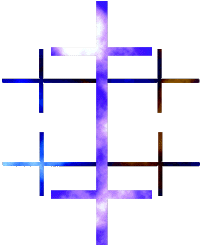 Drandth, God of Wisdom, NG
Drandth, God of Wisdom, NG
Domains: Fire, Knowledge, Magic
History and Personality: The cult of Drandth has only achieved
truly widespread acceptance since the arrival of humans to the shores of
Aladagia. Records indicate that the lands that the races of Aladagia
populated were not lands friendly to the philosopher-priests of the god of
wisdom. The elves were a people of the day, a people of the hunt and
the wood. Though their long lives gave ample times for study, it was
a pastime rather than an activity of worship. The dwarves were a people
of stone, of crafts and metals beneath the earth. Though lore was passed
from father to son, it was not venerated. The humans were a people
of blood, of war and ash. Those that spent their days acquiring knowledge
for the sake of knowledge were those that were not wielding a sword in an
ever-present war. And so a cult kept knowledge of the god of wisdom
a secret practice.
Why did the worship become acceptable after the arrival of humans? The
legends state that the first encounters with the other races were frought
with peril. The generals of the humans were at a loss as to how to
deal with orcs and elves. One woman, Valetai the Wise, stepped forward
and provided counsel, advice on who to trust and how to survive the first,
hard days. With her aid, the humans prevailed, and she laid her knowledge
on the alter of her god, and so the generals venerated Drandth. The
wise god became well known, and learning became acceptable in the time of
the fragile peace that followed.
Celebrations: Drandth asks for no special celebration. Every book that is penned is a sacrement and every wise course of action a prayer. The dedication of any institution of higher learning is often an excuse for the priesthood of Drandth to celebrate their god.
Priesthood: The priests of Drandth are, one and all, scholars. In their quest for truth they are joined, and in little else. Priests are taken from all social classes and friendly races, anyone that has a will to learn. They may study at a university or they may learn from the world on their feet.
Colors and Symbols: The colors of Drandth are cobalt blue and mithral silver. His primary symbol is Altagan, the cobalt moon of magic that cycles through the heavens. For priests, his glyph is the Ascending Thought (One crossed argument, doubled by counsel, and tripled by cooperation), frequently referred to at the Doublecross. It also serves as the de-facto layout for may cities and buildings, as Drandth tends to be the default patron of architecture.
 Elleron, Deity of Time and the Harvest, TN
Elleron, Deity of Time and the Harvest, TN
Domains: Earth, Time, Travel
History and Personality: Elleron is actually the oldest deity, according to his followers, though most people dismiss these claims. Time came before all else, they reply, and will persist even when all else has gone. In any event, no one can say for sure how old Elleron might be, so "Very Venerable" is the default answer. He appears occasionally, but his appearance varies with the time of year. Early in the year, he resembles a young child, while during spring he appears as a youth, middle-aged in the summer, and approaching old age in autumn. He is quite enigmatic, and rarely speaks at all, and only in riddles to those he graces with his insight. Elleron is the god of the harvest season, in addition to his duties with time, and shares similar high office with Quanesta during that time of year.
Celebrations: There are two major observances of Elleron. The major holiday is celebrated the morning after Darkhallow, on the first day of the new year. It is, quite appropriately, named the New Year's Celebration. After the somber reflection of the night before, this day is spent in raucous merry-making, to remind people that while death is ever-present, life always goes on in some new form. The other celebration to Elleron takes up the entire harvest season. When the first day of the harvest arrives, the local farmers kindle a moderately large fire at the temple of Elleron, and maintain the fire until the last of the stores have been brought in. When that is complete, the fire is allowed to burn out, and the harvest celebration presided over by Quanesta's priests begins.
Priesthood: Elleron's priests are few and far between, owing to the lack of direction they receive from their god. As such, they share few common characteristics, and can come from nearly any walk of life. Their only major duty is to oversee the fire kindled during the harvest season, and to make several daily prayers to Elleron during that time. The priesthood has no overall leadership, and the most senior priest or priestess in a region is generally deferred to by younger priests on any issues that concern the entire region.
Colors and Symbols: Elleron's colors are yellow, white, and silver, and symbols include hourglasses, sundials, sand, and the celestial dome. **
 Urthana, Goddess of Hearth and Home, Disciple of Soulforger,
LG
Urthana, Goddess of Hearth and Home, Disciple of Soulforger,
LG
Domains: Fire, Healing, Strength
History and Personality: Urthana is one of the most widely respected of all the Council deities, given her role as the protector of the home-fire and the warden of the door. It is Urthana who keeps malign influences out of the house, Urthana who grants health and healing to the sick, and Urthana who gives strength for the daily labors. In addition to these functions, Urthana serves as an acolyte of Soulforger, and is a patron of crafts, especially carpentry, masonry, cooking, and so-called "cottage industries" such as weaving, sewing, and spinning. Urthana rarely manifests on the mortal plane, but she always appears as an elderly woman when she does, usually wrapped in a brown cloak. A sighting of Urthana always means good fortune in the near future.
Celebrations: Urthana has no special holy days, but most people invoke and thank Urthana whenever a new home is made, whenever a child is born, whenever the sick need healing, or whenever a home is in need of aid. Many people hang wreaths on their doors as a sign of Urthana's protection, which is said to ward evil spirits from the house.
Priesthood: The priests and priestesses of Urthana are often a busy lot, despite the lack of official holy days. Much of their time is spent in service to Urthana by overseeing dozens of minor rituals and observances. Additionally, many of Urthana's acolytes maintain large households with numerous children. Most disciples also spend a fair amount of time mastering one of the crafts Urthana is a patron of.
Colors and Symbols: Symbols of Urthana include flames, hammers and other tools, wreaths, and doors. Her colors are brown, orange, red, and gray. **
** Denotes writeups by A.Calton (includes the short stories under these writeups)